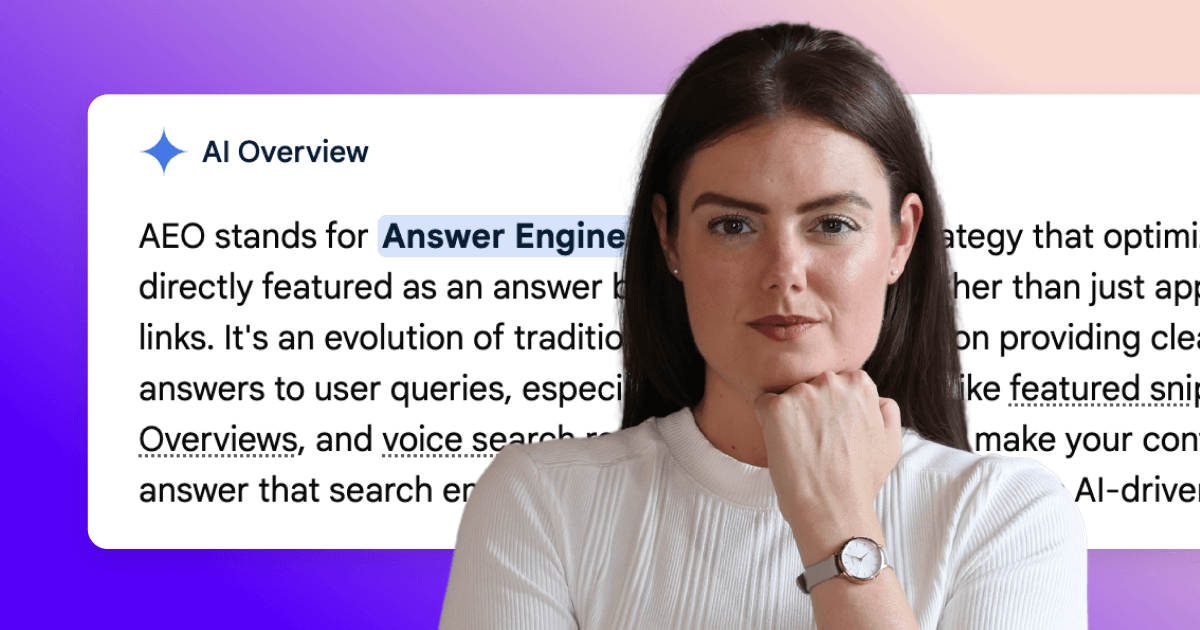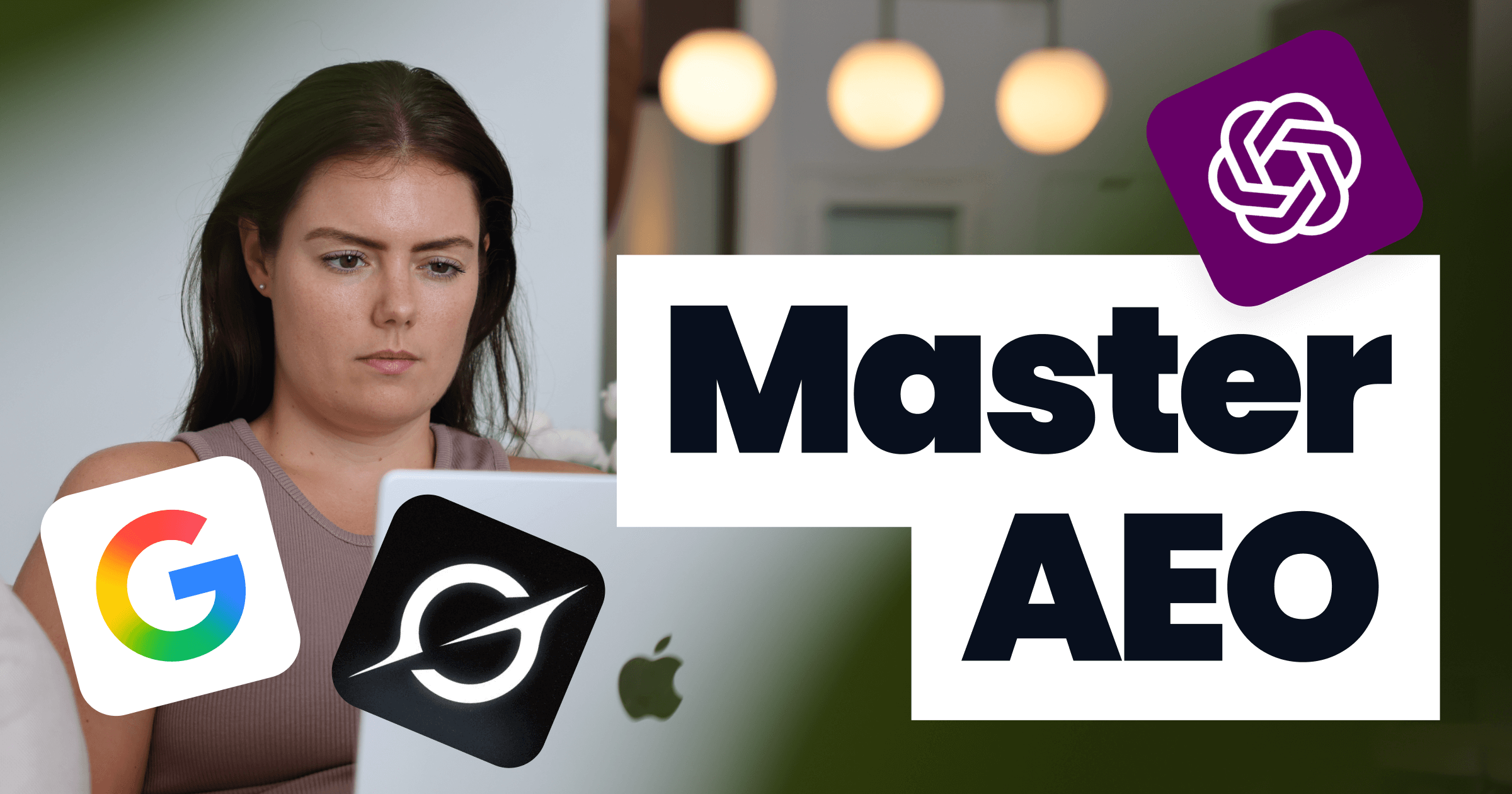
If we had £1 for everytime a client has asked us one day after we push a new website live why they aren’t showing up on Google yet, we would be very rich!

However, we understand that for many people, Google’s algorithm and understanding how to get a website to appear in that first page is comparable to rocket science.
A new website's success depends on many factors, including its visibility on search engines like Google. Unfortunately, many new websites struggle to rank on Google, resulting in low traffic and poor visibility.
Let’s break it down for you…
On-page SEO
On-page SEO refers to the optimisation of individual web pages to rank higher and earn more relevant traffic in search engines. This includes keyword research and optimisation, content quality and relevance, and website structure and organization.
1. Keyword Research and Optimisation
Keyword research is a building block to any successful website and it is an essential part of on-page SEO. It helps you identify keywords that are relevant to your website and target audience, and also how difficult it will be to rank for those keywords. Once you've completed your keyword research, you should optimise your website's content for those keywords.
How to carry out keyword research and optimisation?
- Identify your target audience: Determine who your ideal audience is and what their needs are. This will help you determine what keywords they are likely searching for. Put yourself in their shoes and figure out what they are searching for.
- Conduct keyword research: Use keyword research tools like Google Keyword Planner, SEMrush, or Ahrefs to find keywords related to your business or industry. Look for keywords with high search volume and low competition. If you want to find out more about what these terms mean then take a look at this article which goes into detail about the keyword research process.
- Create a list of keywords: Make a list of relevant keywords, along with their search volume and competition level. This will help you prioritise which keywords to target first.
- Optimise your website's content: Incorporate your keywords into your website's content, including your page titles, headers, and body content. Be sure to use your keywords naturally and avoid keyword stuffing, as this can negatively impact your search engine rankings.
- Monitor your rankings: Use tools like Google Search Console or Ahrefs to track your website's rankings for your targeted keywords. Make adjustments to your website as needed to improve your rankings over time.

2. Content Quality and Relevance
Once you’ve optimised your site for keywords and made sure your content is rich in relevant keywords, you should consider the quality and relevance of your content.
How to ensure content quality and relevance?
- You should conduct user research; get to know your audience, ask them questions and find out what they are really looking for in a website and in your content. Check that your content is relevant and use keywords and phrases that your audience is researching.
- Check for readability: your content should flow and be easy to read. Ask colleagues or friends to take a look over your content and check for grammar and punctuation. Two pairs of eyes are always better than one when it comes to proofreading and checking written content.
- Structure: you didn’t learn how to structure essays in school for no reason; people love content that is clearly structured and flows properly. Start with an introduction, include headings and subheadings, and round it off with a conclusion and you will have a high quality piece of content.
- Staying up to date: You should regularly update your website with fresh, new content. Don’t be afraid to add and remove content based on user metrics and feedback.
One of the most common reasons why a new website may not rank on Google is due to poor quality content. Google's algorithm is designed to reward high-quality, valuable content, and to penalise low-quality, thin content. This means that if your website contains content that is not relevant, not informative, or not engaging, it will not rank well on Google.
Follow the steps above to ensure your content is high quality and you’re one step closer to your site ranking well on Google.
3. Website Structure and Organisation
The structure and organization of your website also plays a crucial role in your website's ranking.
What to look for to improve my website structure and organisation?
- Clear and consistent structure: in order for search engines (and humans!) to better understand the content on your website you should ensure you have a logical hierarchy of pages and a clear navigation system.
- Header tags: Use header tags (H1, H2, H3, etc.) to structure your content and make it easier for users to scan and understand. H1 tags are used for main headings, while H2, H3, etc. are used for subheadings.
- Optimise your URL structure: Use descriptive, concise, and keyword-rich URLs for each of your pages. This helps both users and search engines understand what each page is about.
- Optimise your images: Use descriptive and keyword-rich file names for your images, and make sure to add alt text to describe the content of your images. This helps search engines understand the content of your images, and it also improves accessibility for visually impaired users.
- Make sure your website is mobile-friendly: Ensure that your website is optimised for mobile devices, with a responsive design that adjusts to different screen sizes. Google now prioritises mobile-friendly websites in its search results.

- Use internal linking: Use internal links to connect related pages on your website and help users navigate to the content they are looking for. This also helps distribute page authority and link equity within your website.
- Avoid broken links: Check for and fix any broken links on your website. This helps ensure a good user experience, and it can also improve your search engine ranking
Off-page SEO
Off-page SEO refers to the optimisation of elements outside of your website that can impact your website's ranking. This includes building high-quality backlinks, establishing a strong social media presence and engaging with your audience, and optimising for local SEO.
1. Building High-Quality Backlinks
Backlinks are links from other websites to your website, and they play an important role in determining your website's ranking on Google.
The quality of your backlinks is more important than the quantity, so it's important to focus on building high-quality, relevant backlinks from reputable websites.
How can I build high quality backlinks?
- Create valuable, shareable content. Content that is shareable performs well because it has a purpose behind it.
- Reach out to other websites in your industry and ask if they would be willing to link to your content. When you do this make sure your email is personalised and that you provide specific examples of why you think their audience would find your content valuable.
- Participate in online communities: Join online communities related to your industry and participate in discussions. Make sure to add value to the conversation, and if appropriate, include a link to your website
- Monitor your backlinks: Use tools like Ahrefs or SEMrush to monitor your backlinks and keep track of new links as they come in. You can also use these tools to identify opportunities to reach out to new websites and build new links.

- Avoid link schemes: It's important to avoid participating in link schemes or other unethical tactics to build backlinks. Google is able to identify and penalise websites that engage in these practices, so it's important to focus on building high-quality, natural backlinks.
2. Social Media Presence and Engagement
Your social media presence and engagement can also impact your website's ranking on Google. By having an active social media presence, you can build a strong online reputation, engage with your target audience, and drive traffic to your website.
Regularly posting high-quality, relevant content and responding to your followers' comments and questions can help you establish a strong social media presence. Social media algorithms have evolved now to really prioritise content with value, so make sure every post you share provides value to your audience.
In addition, social media can be used to attract backlinks, by sharing your content and encouraging others to do so you can drive traffic and users to your website.
3. Local SEO
If your business has a physical location or serves a local area, optimising for local SEO is crucial. This is a step that many forget to include because we are so used to the online world, yet considering your local customers is one of the most important things you can do.
How to optimise for local SEO?
- Claim your Google My Business listing: Google My Business is a free tool that allows businesses to manage their online presence across Google, including search and maps. Claiming and verifying your listing is an important step in improving your local SEO.
- Optimise your website for local keywords: Make sure to include relevant local keywords in your website's content and meta tags, such as your city and state name.
- Get listed in local directories: Being listed in local directories such as Yelp, Foursquare, and TripAdvisor can help establish your business as a credible and trustworthy source of information, which can positively impact your local search ranking.
- Encourage customer reviews: Encourage customers to leave reviews on your Google My Business listing, as well as other review sites like Yelp and TripAdvisor. Positive reviews can help improve your local search ranking and build trust with potential customers.
- Use schema markup: Schema markup is a type of code that helps search engines understand the content on your website. By adding schema markup for local businesses, you can make it easier for search engines to understand your business location, phone number, and other important information.
- Get listed in local news sources: If your business is mentioned in local news sources, be sure to have them link back to your website. These high-quality, local links can help improve your local search ranking.
- Monitor your local search ranking: Use tools like Google Search Console or SEMrush to monitor your local search ranking and see how your website is performing in local search results. This can help you identify opportunities for improvement and make changes that can positively impact your local SEO.
Technical SEO
It’s time to get a bit more technical, but don’t panic! Each of these things are reasonably straightforward to carry out.
Technical SEO refers to the optimisation of your website's technical elements to improve its ranking on Google. This includes website speed and mobile-friendliness, crawling and indexing, and schema markup and structured data.
1. Website Speed and Mobile-Friendliness
How many times have you visited a website and immediately left because nothing loads quick enough? In this day and age, people won’t wait for things to load, so it’s vital to ensure you don’t fall into this trap. A slow-loading website or a website that is not optimised for mobile devices will negatively impact your website's ranking and user experience.
To improve your website's speed and mobile-friendliness, you should use a responsive design, minimise the use of large images and videos, and optimise your website for fast loading times. You can compress images to ensure they don’t tak eup as much space using Tinypng.
2. Crawling and Indexing
Crawling and indexing refer to the process by which search engines discover and catalog the content on your website. To ensure that your website is properly crawled and indexed, you should:
- Submit your sitemap to Google Search Console. A sitemap is an XML file that lists all the pages on your website.
- Use clear and descriptive URLs and meta tags, this will make it easier for search engines to understand your page’s content.
3. Schema Markup and Structured Data
Schema markup and structured data are code snippets that provide additional information to search engines about your website's content. Using schema markup and structured data can help your website rank higher in search results and provide a better user experience. You can use the Schema.org website to find the right code snippets for your website's content and add them to your website's HTML.
Ready to get your site ranking?
As you will hopefully have realised after reading this article, this isn’t the Superbowl and you can’t just sit back and relax while you wait for the magic to happen.

If you want your website to rank you have to put in the work to make it happen.
Ranking on Google is crucial for a new website's success, but it can be challenging.
By focusing on on-page SEO, off-page SEO, and technical SEO, you can improve your website's ranking and visibility on Google.
Remember, SEO is a long-term strategy, so be patient and persistent in your efforts, and your website will eventually start to rank higher in search results.
If you need help improving your website's ranking on Google, consider working with a professional SEO consultant or agency, like us!

Just a heads up, some of the links in this article may be affiliate links, meaning we may make a small commission on any sign-ups or purchases for the tools we recommend.






































